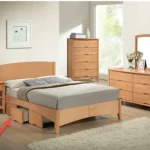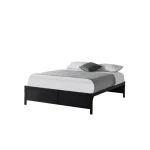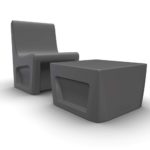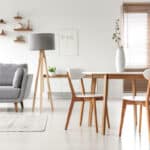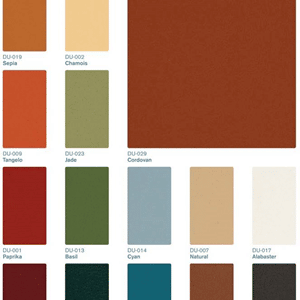Making Group Living Spaces Livable

Any time you have more than one person sharing a living space the lines of functional spaces are bound to start blurring – living rooms can become a place for abandoned shoes and jackets; dining tables can end up collecting mail and magazines; and the bedrooms? Well they just end up collecting everything else!
So how do you rein in on residents, staff and all their stuff?
Here are some suggestions from group home administrators around the country:
- In order to keep functional spaces functional, invest in accessories like a coat rack or hooks near the door to encourage proper placement of outdoor gear.
- Sometimes something as simple as attaching baskets or canvas totes to the wall in a row, each labeled with residents’ names, can be a great way to consolidate all those small items that no one knows where to put when residents walk in the door after an outing.
- When buying furniture, keep scale in mind. Scale can be an overwhelming concept for those of us not born with well-tuned spatial perception. The idea is to add enough furniture to make the space useful and comfortable without going overboard with so much furniture that walking through a room because a challenge.
- Contract furniture providers often offer space planning as part of their services without any additional charge. Having a plan on paper takes the possibility of mistakes out of the project and ensures that your furniture investment will be 100% functional for your group.
- Make sure your contract furniture provider asks the “right questions” like whether or not you serve residents in wheelchairs or other mobility devices, behavioral concerns, suicide risks or any other special needs.
- Make sure that you have adequate storage in all community living areas, dining areas and bedrooms. Storage furniture gives a place to everything that might otherwise end up as clutter in communal spaces. When closets just aren’t enough (or just don’t exis
t) storage furniture like wardrobes, tall cabinets, dresser and chests are durable and functional. Wood and metal options offer extra space with long-lasting finishes and construction. When security is an issue, locks can easily be added to most storage furniture to make sure items stay where they belong. Many tall storage cabinets, wardrobes and armoires can be configured to include storage shelves, hanging rods and cubbies in any combination to accommodate storing just about anything. - Always add occasional tables, coffee tables and / or oversized ottomans to shared living spaces where residents, families and staff gather regularly. These are excellent ad hoc spaces that can be used to play board games, catch reading materials, gather group therapy material or to just be a place for people to put their feet up. Add these types of pieces in to your space planning on paper (see step #2) to ensure that they do not interfere with traffic patterns.
- In order to make resident feel the sense of home that allows them to settle in to therapeutic living spaces, it is a best practice to offer enough personal space for every resident to feel secure about leaving their special items. This can be tricky with limited or shared sleeping spaces. Dressers and chests with even numbers of drawers can be evenly divided in shared spaces to allow each resident their own storage. Underbed storage options like wheeled storage trays and underbed chests maximize use of space without sacrificing valuable floor space. Small desks that allow residents to draw, write, place electronics, etc. encourage productive private time and keep each persons’ personal items out of public use spaces.
Whether your group living facility accommodates short or long stays, it is important to keep interior spaces clean and free of clutter that can be hazardous and just plain unattractive.
Get the Complete TOUGH STUFF! CatalogKeeping spaces mess free eliminates stress and encourages residents and staff to settle in. Industry experts like contract furniture providers can make the right recommendations that will enable your facility to be functional and comfortable for all.
Topics: Interior Design Advice of Group Living Facilities, Contract Furniture, Group Furniture Buying Advice
Inquiry Now



